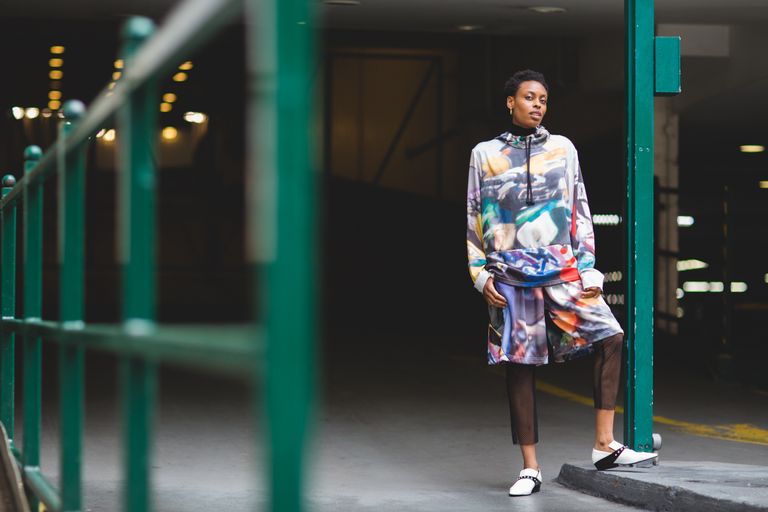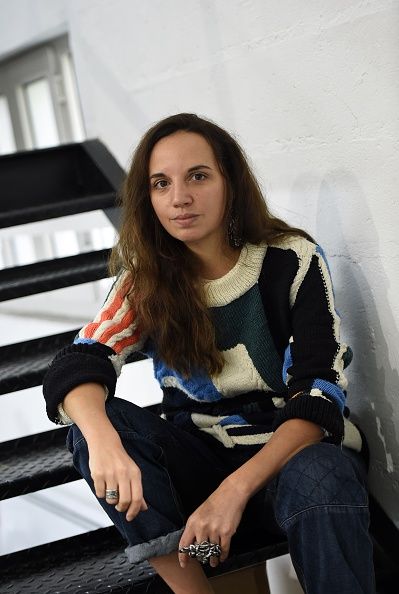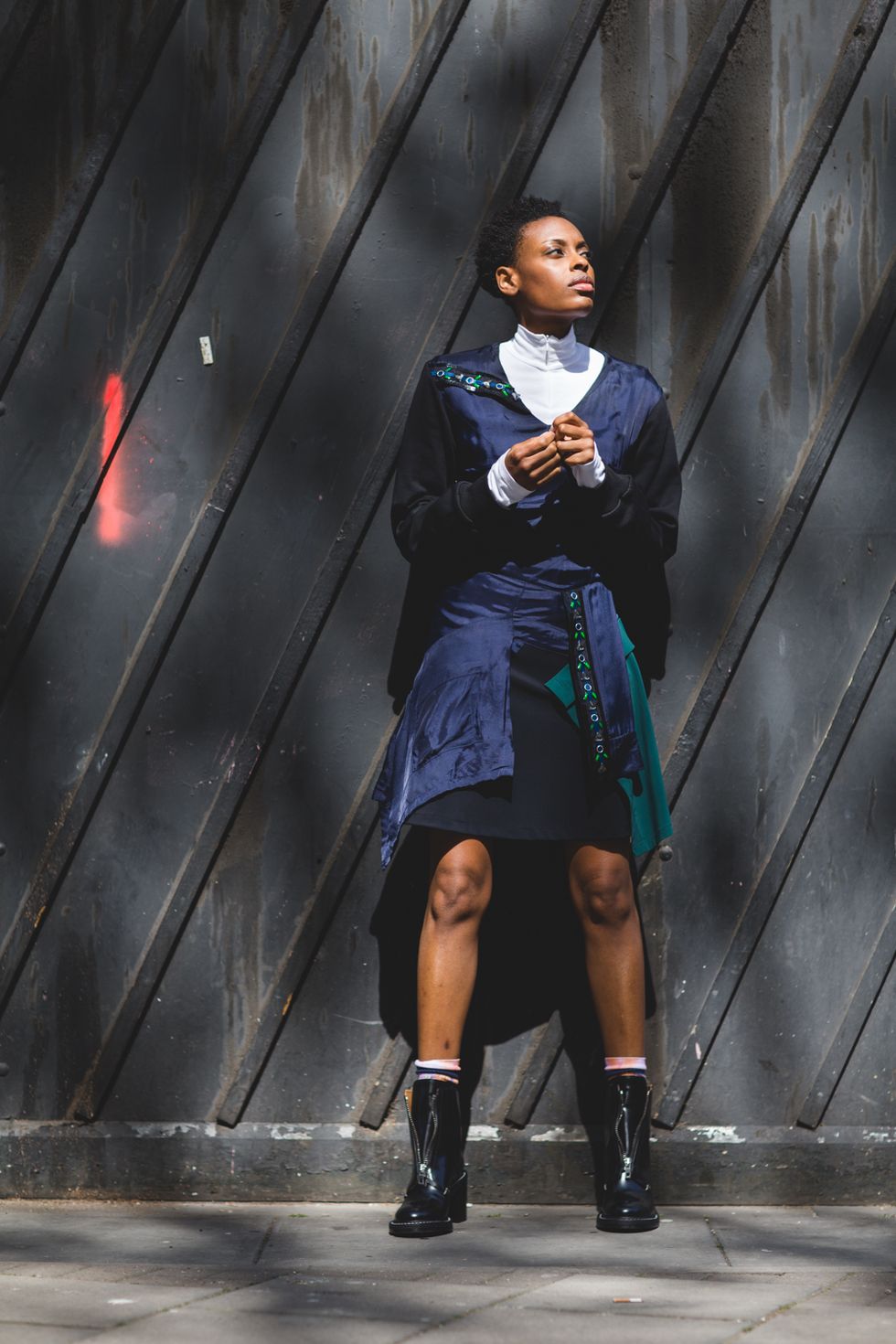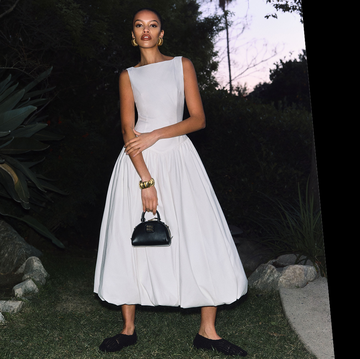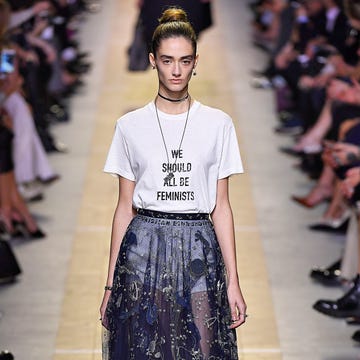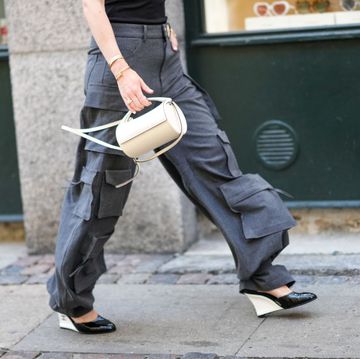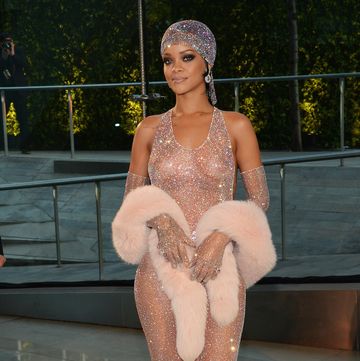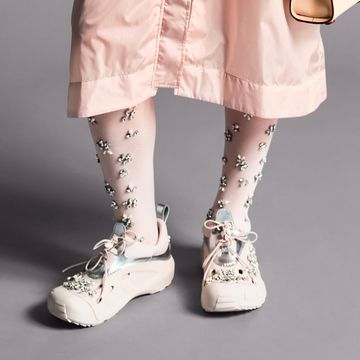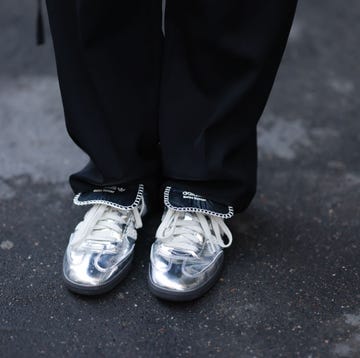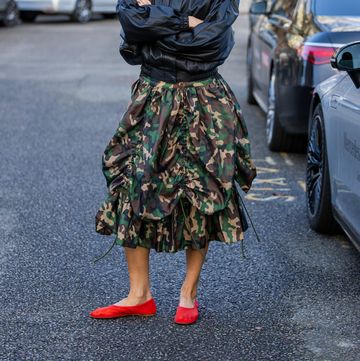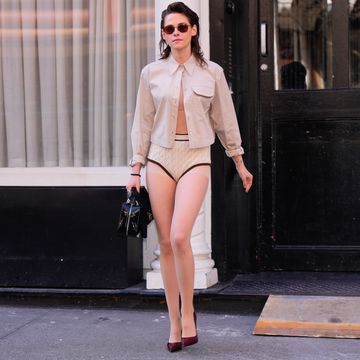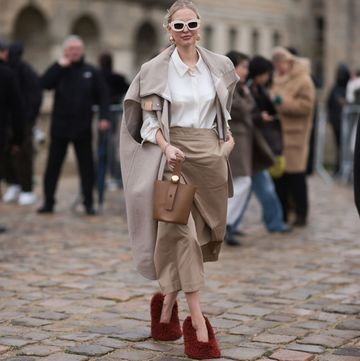While streetwear is an increasingly difficult concept to define, one thing is clear: most of the designers driving it seem to be men. But through her new label Koché, Founder and Creative Director Christelle Kocher, 37, is changing that, alongside a small handful of women designers, including Grace Wales Bonner and Martine Rose, who offer a distinctly feminine take on the idea.
'I wanted to take the tradition of couture that we have in France and bring something more easy, more urban and more real to it,' she explains from Paris. 'I wanted to mix the two worlds because it's the way modern people wear clothes. I love to have my embroidery, beading and lace, but it has
to be comfortable.' Kocher is quick to point out, though, that femininity doesn't have to mean any of those things.
Indeed a part of the beauty of this new chapter we're in is the celebration of multiplicity. And with that, the idea that femininity can't be boiled down to a ruffle, piece of decoration, or a single garment. In Kocher's case, it means a range of elements, such as the softness of a silk dress made tough with the badassery of a Suzuki graphic print. 'Today's woman will not wear the strong jacket with big shoulders. Women can be feminine, comfortable and powerful all at the same time.'
Before starting her brand, Kocher spent 13 years designing for various, radically different womenswear brands, having worked on the teams of Emporio Armani, Chloé, Bottega Veneta, Dries Van Noten and Sonia Rykiel among others, before striking out on her own. In the two years since she did, her label has earned the support of influential retailers (Selfridges in London, Harvey Nichols in Hong Kong and Ikram in Chicago, for example) as well as an LVMH nomination.
Her silhouettes tend to be oversized and voluminous but in lush, rich fabrics. 'Being a female fashion designer is a signature I bring; I want to liberate and propose a strong image of women. I don't want a woman who identifies with a stereotype. There are things I'm taking from menswear, but I'm trying in a subtle way to integrate the woman's point of view. I'm trying to identify a new womanhood.'
